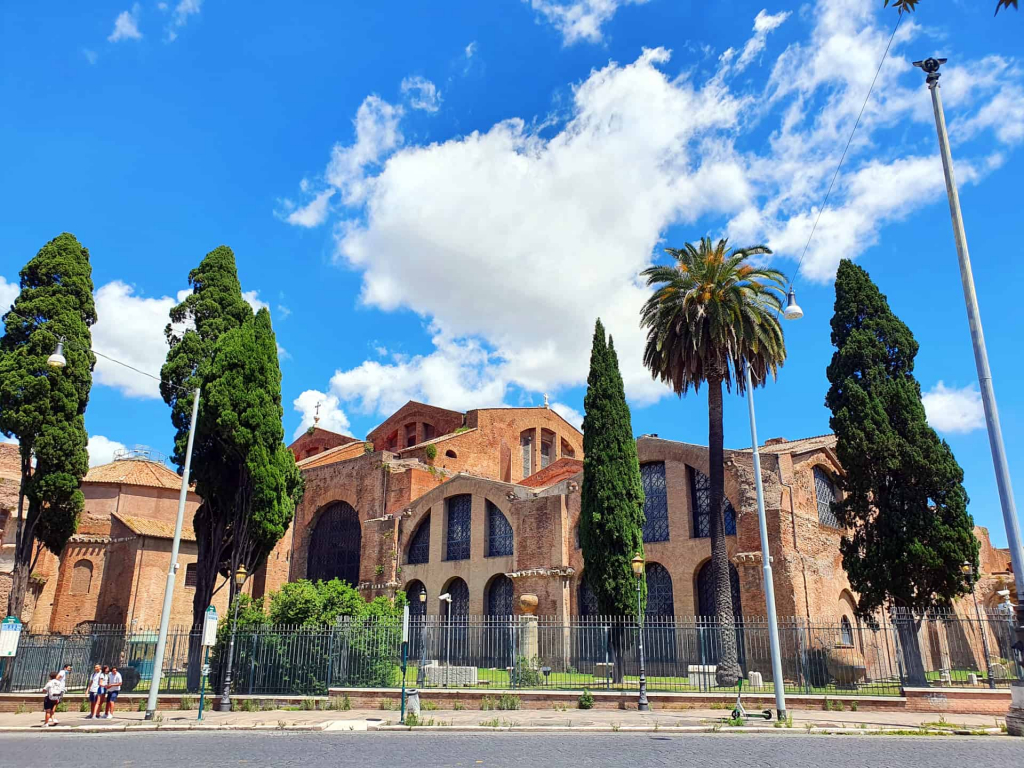
Saint Agnes
Saint Agnes of Rome was born around 237 in Rome and died there around 250 Her name: Agnus means lamb in Latin. She was born into a noble family. Already at the age of 12 she was radiantly beautiful and confident in her faith.
Even the son of the city prefect, Symphronius, had noticed this and so he asked for her hand. The noble Roman woman rejected him on the grounds that she was already engaged. When the young man asked her several times, she finally replied that her fiancé was Jesus Christ.
Saint Agnes was put on trial, but all the judge’s suggestions, pleas and threats could not shake her steadfastness. Then he ordered her to strip naked and force her into prostitution. But her long curls enveloped her like a thick cloak, and an angel brought her a robe of light, which shone through the whole house.
Symphronius and his friends sought her out in the brothel and backed away blinded. The young man himself fell dead, strangled by an evil spirit, when he tried to touch Agnes. Called back to life by her prayer, he denounced her as a witch.
The prefect dared neither save her nor condemn her. So he left the country and handed her over to another judge. He had her thrown into a great fire in the Domitian’s stadium, but the flames receded from her. Then the prefect ordered the executioner to put a sword through her throat. She was killed as lambs are killed.

Saint Agnes over the flames in Sant’Agnese in Agone (Rome)


The head relic of Saint Agnes in Sant’Agnese in Agone (Rome)
The place of martyrdom is considered the Circus Agonalis, the stadium of Emperor Domitian. Her parents and friends buried Agnes in a catacomb, now named after her, on the Via Nomentana, above which the church of Sant’Agnese fuori le mura was built.
The later tradition tells of Emerentiana, milk sister of Agnes, who opposed the despisers of the Christians who wanted to prevent Agnes’ burial. She held the wake. On the eighth night, she saw a circle of beautiful virgins, Agnes in a golden dress, the ring of her betrothal to Christ on her finger, a white lamb on her right.
Above the place of execution stands today the Basilica of Sant’Agnese in Agone in Piazza Navona, built by order of Pope Innocent X from 1652 to 1672. The architect was the master Francesco Borromini.
Over the catacombs of Saint Agnes, the church of Sant’Agnese fuori le mura was built around the year 630. The church stands next to the mausoleum of Constantia, daughter of Emperor Constantine. Agnes’ bones were placed together with those of the Emerentiana by Pope Paul V in a silver shrine under the altar around 1615.
On Saint Agnes’ Day, the Pope blesses the Agnes’ lambs on that altar. The wool of these lambs is used to make the palliasses that are presented to the archbishops appointed last year on the feast of Peter and Paul.
Saint Agnes is the patron saint of virgins, fiancées, children, florists and gardeners, and of chastity. She is usually represented with a lamb, long hair and a sword.

Treasures of Rome – Rome Guided Tours
Roberto Alois Lautenschlager Kung
[email protected]
Partita IVA: 17002181000
“ROMA AETERNA EST”
Rome is eternal – (Albius Tibullus)






